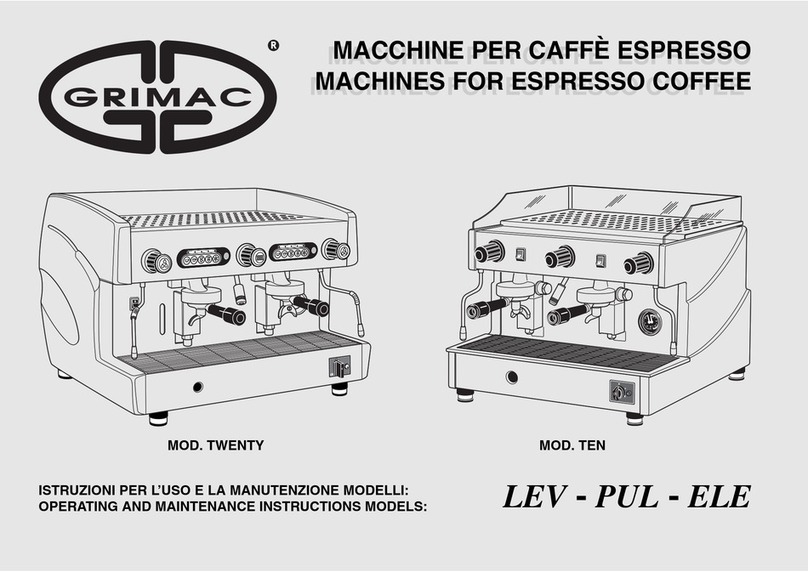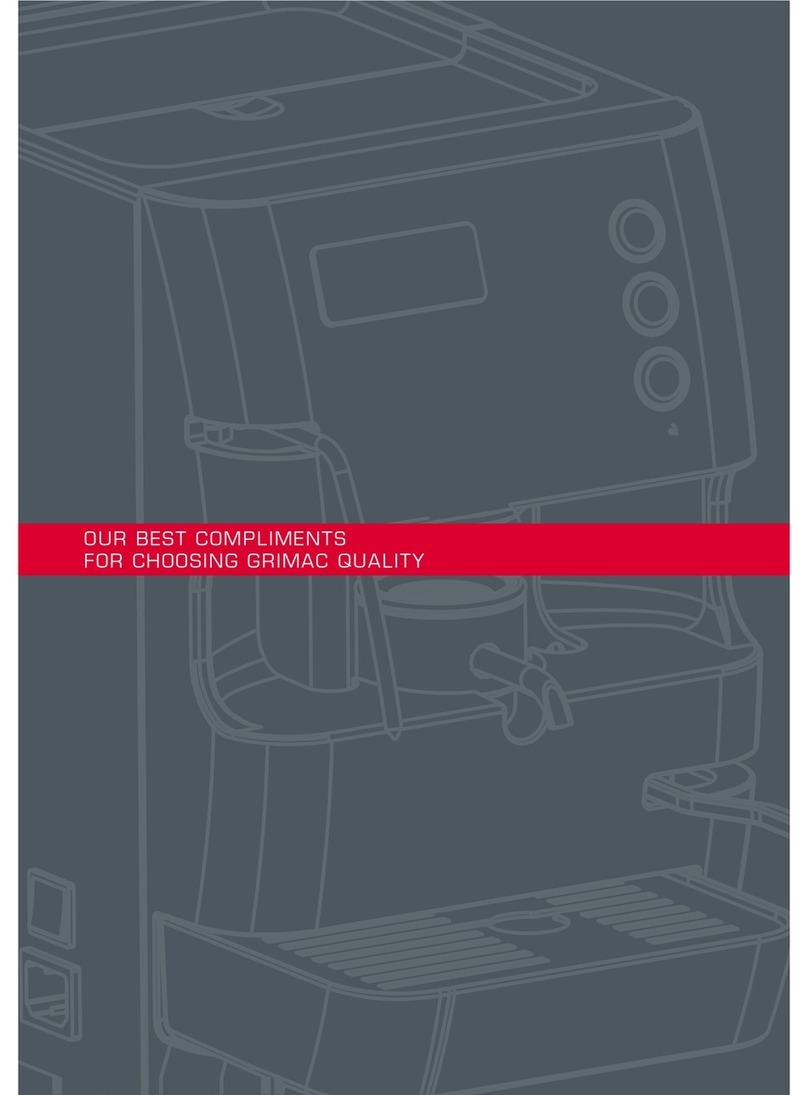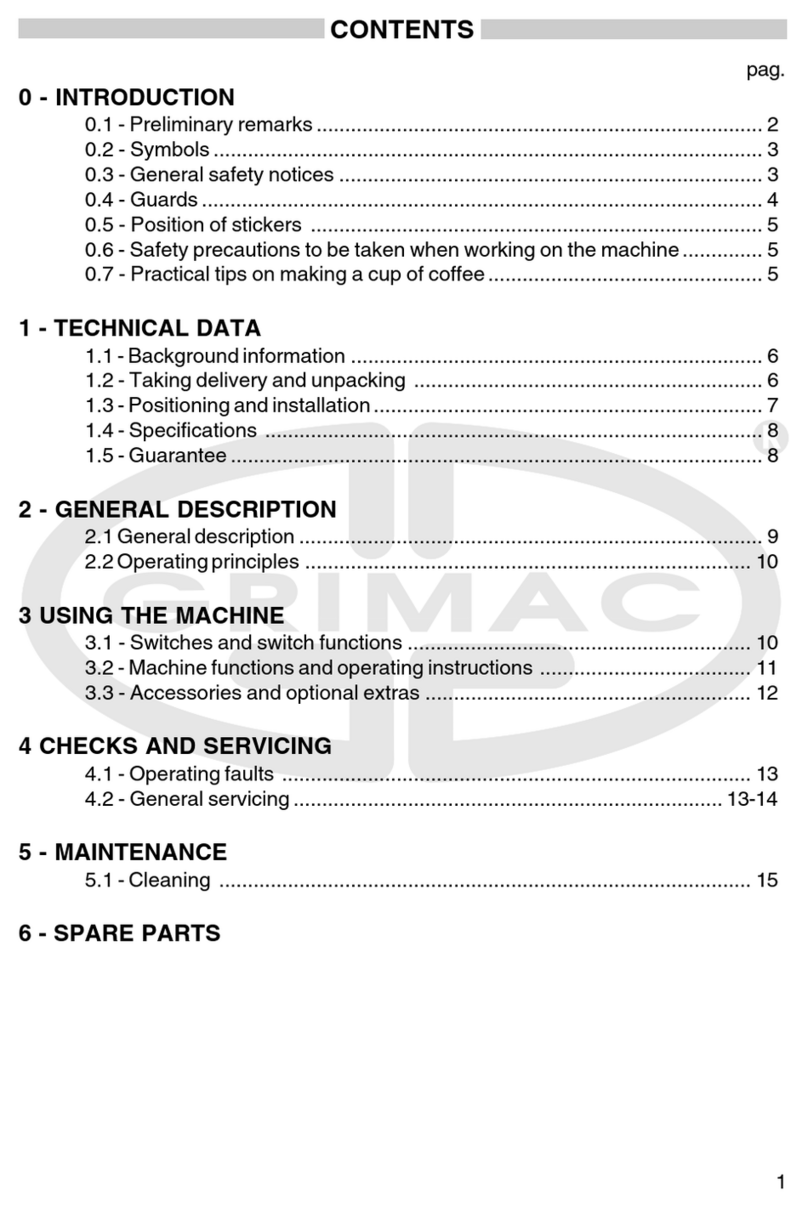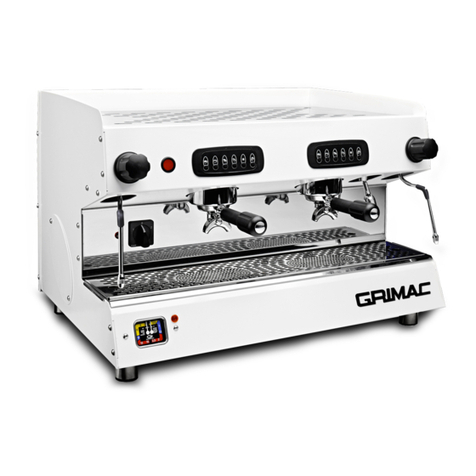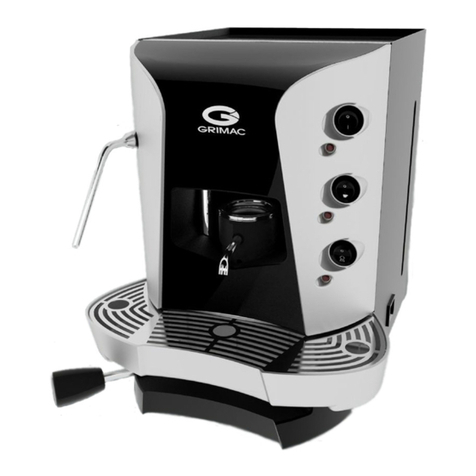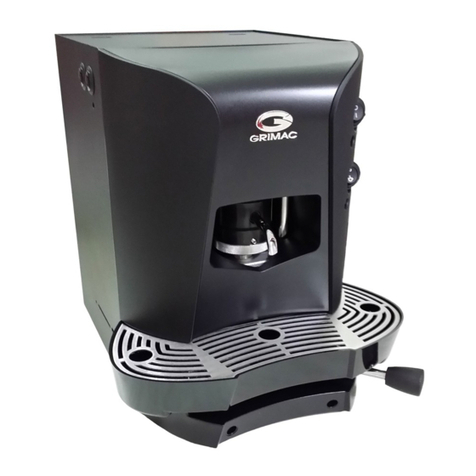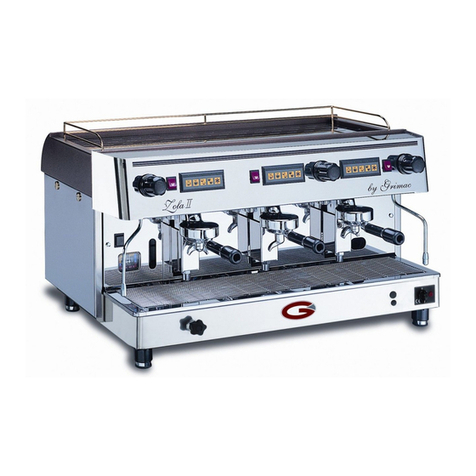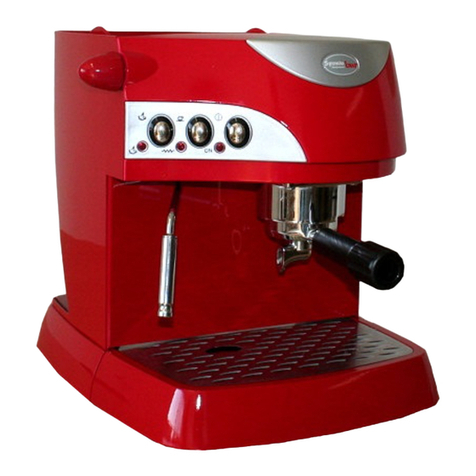10
6. MANUTENZIONE DELLA MACCHINA
La pulizia della macchina deve essere eseguita
solo quando la macchina è fredda e scollegata
dalla rete elettrica.
• Non utilizzare alcol etilico, solventi, spugne abrasive e/o
agenti chimici aggressivi.
• Non immergere la macchina in acqua e non asciugare i com-
ponenti in un forno convenzionale e/o a microonde.
• Giornalmente, si consiglia di cambiare l’acqua all’interno del
serbatoio; non riutilizzare l’acqua recuperata dal serbatoio
per scopi alimentari.
• (Fig.22) - Giornalmente, si consiglia di estrarre le vasche
raccogli gocce e le griglie, vuotarle e lavarle con acqua fresca
potabile. Attenzione alla movimentazione della va-
schetta nel caso sia troppo piena.
• Le vaschette raccogli gocce vanno comunque svuotate tutte
le volte che si riempiono e sempre prima che siano completa-
mente piene.
Nota: periodicamente si consiglia di far eseguire
un ciclo di decalcicazione ad un tecnico specia-
lizzato per mantenere la vostra macchina in perfetta
ecienza.
6.1. Pulizia filtri Porta cialde
Attenzione: prima di procedere con questa ope-
razione, spegnere la macchina e staccare la spi-
na dalla presa di corrente. Attendere che la macchina si
sia freddata.
• Ogni giorno, a ne giornata, dopo aver erogato l’ultimo
caè eseguire un lavaggio veloce del ltro di ogni gruppo.
Eseguire le operazioni normali per l’erogazione di un caè
ma senza inserire la cialda. Erogare circa una tazza di acqua.
• In ogni caso, almeno una volta a settimana si deve proce-
dere alla pulizia del ltro presente in ogni porta cialda.
• La pulizia del ltro è molto importante per mantenere
sempre alto il livello qualitativo del caè erogato dalla
macchina.
• Per procedere alla pulizia del ltro, lo si deve smontare
dal portacialde.
• (Fig.17) - Per smontarlo, utilizzare un piccolo cacciavite
e fare leva sul bordo esterno.
• (Fig.18) - Rimuovere il ltro dal porta cialda.
• Successivamente vericare lo stato del ltro e lavarlo
con acqua tiepida.
• Per una pulizia più accurata si può utilizzare uno spazzo-
lino da denti con setole dure.
Nota:se il ltro risulta deterioratoodanneggiato,
occorre sostituirlo con uno nuovo.
É vietato lasciare le cialde all’interno del porta
cialde durante i periodi d’inattività.
6.2 Regolazione filtro porta cialde
Attenzione: prima di procedere con questa ope-
razione si deve spegnere la macchina ed atten-
dere che questa si sia freddata. In caso contrario utilizza-
re dei guanti protettivi adeguati.
Ogni ltro porta cialde deve essere regolato in
modo indipendente. Viene mostrata la sola re-
golazione del ltro destro, per la regolazione del ltro
sinistro agire sui rispettivi comandi.
Il ltro porta cialde, in fase di collaudo, è stato tarato adeguata-
mente; ciononostante, durante il normale funzionamento, si può
avere la possibilità di una ulteriore regolazione.
La necessità di regolare il portacialde viene evidenziata da un
tralaggio di caè dal portacialde durante l’erogazione.
Nota: la regolazione deve essere eettuata solo
ed esclusivamente in caso di tralaggi.
Per eliminare il gioco formatosi, procedere come segue:
• (Fig.15) - spostare leggermente la leva del gruppo destro
verso destra no a scoprire il grano.
• Con la chiave a brugola, svitare il grano di bloccaggio del
gruppo destro, facendo però attenzione a non svitarlo com-
pletamente per non rischiare che cada o vada perso.
• (Fig.16) - Tenendo sempre in posizione la leva, provare a
girare la ghiera:
Provare a chiudere il portacialde destro utilizzando la leva
inserendo la cialda che state utilizzando.
- in senso antiorario (o verso destra), per stringere la pre-
sa del portacialde
- in senso orario (o verso sinistra) per allargare la presa.
Il tutto facendo particolare attenzione a non esagera-
re, rendendo la chiusura troppo stretta o troppo lenta
